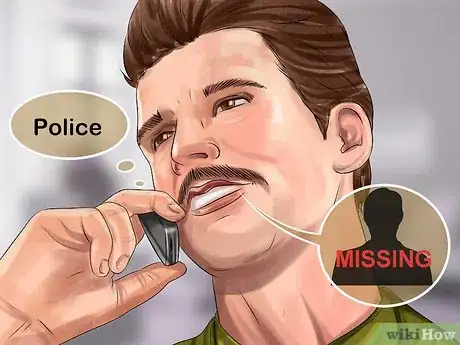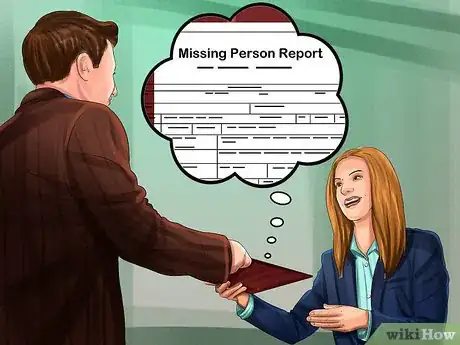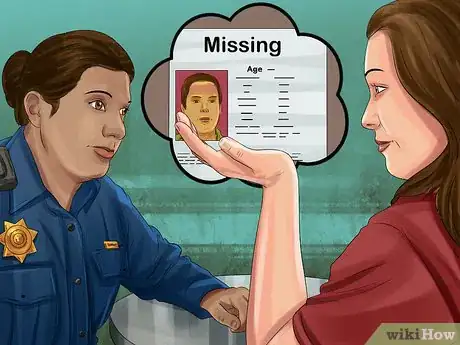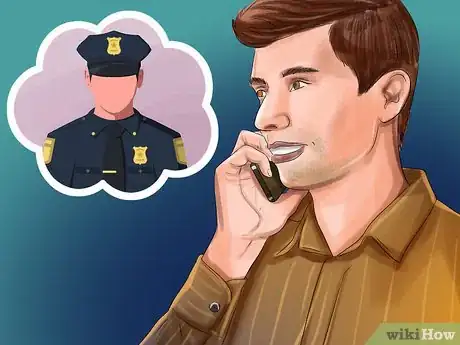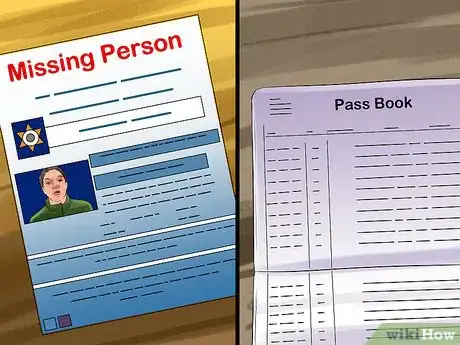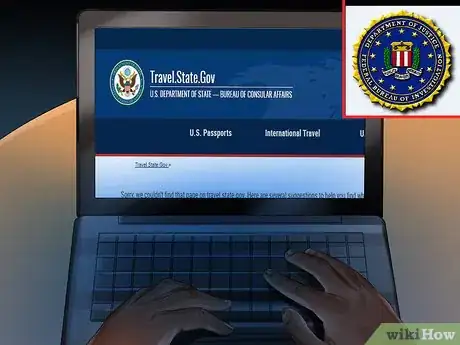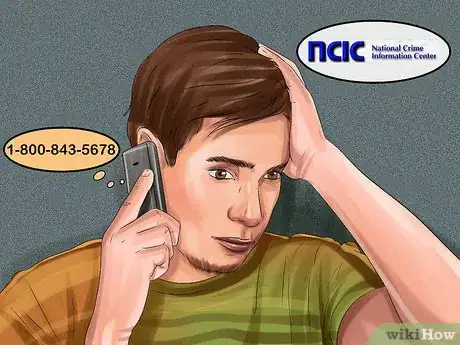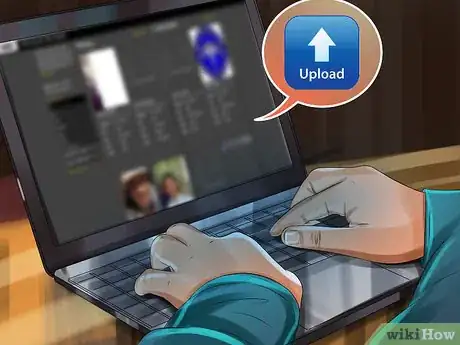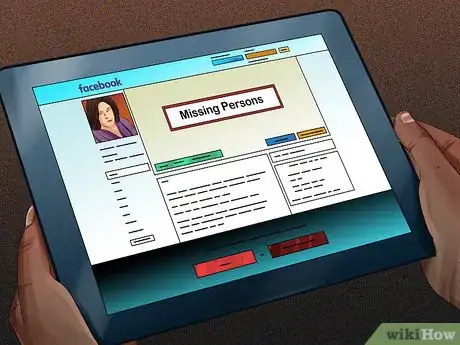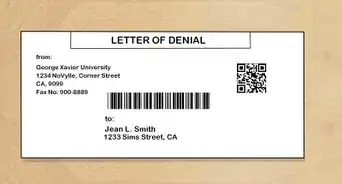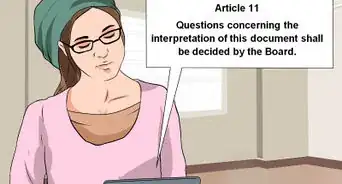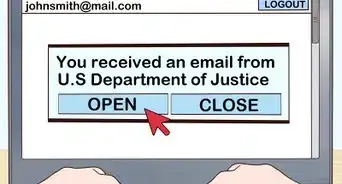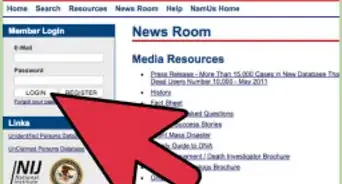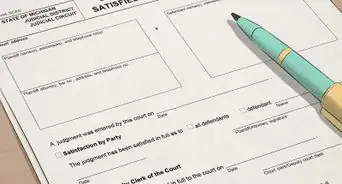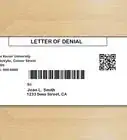This article was co-authored by Saul Jaeger, MS. Saul Jaeger is a Police Officer and Captain of the Mountain View, California Police Department (MVPD). Saul has over 17 years of experience as a patrol officer, field training officer, traffic officer, detective, hostage negotiator, and as the traffic unit’s sergeant and Public Information Officer for the MVPD. At the MVPD, in addition to commanding the Field Operations Division, Saul has also led the Communications Center (dispatch) and the Crisis Negotiation Team. He earned an MS in Emergency Services Management from the California State University, Long Beach in 2008 and a BS in Administration of Justice from the University of Phoenix in 2006. He also earned a Corporate Innovation LEAD Certificate from the Stanford University Graduate School of Business in 2018.
This article has been viewed 216,672 times.
Reporting a missing person in the U.S. can make finding them easier and help you stay calm while you search for the person. Whether you are a parent reporting a missing child or a relative searching for a missing family member, start by filing a missing person’s report with local law enforcement. You can also contact other organizations trained to find missing persons, such as the FBI, and post information about the missing person online so they can be brought home safe.
Steps
Filing a Missing Person’s Report
-
1Call the local police department once you notice the person is missing. If you are worried about the person or know they have physical or mental issues, contact local law enforcement right away. You should also reach out if the person is under 18 years old or 65 years or older. Time is usually of the essence in missing person cases.[1]
- Search for the phone number of your local police department online.
- Do not touch the missing person's things, such as their room, clothing, or car, or tamper with their social media accounts, as they may be used as evidence later by the police.
-
2Ask to file a missing person’s report. Explain to the officer that you would like to report a missing person and specify how long the person has been missing, or the last time you saw them.[2]
- Some police departments will ask you to wait 24-72 hours to file an official report, unless the circumstances of the missing person appear dire or concerning. You can try to get the police to file the official report if you are very worried about the person or if you think they may be missing due to foul play or suspicious circumstances.
Advertisement -
3Provide personal information about the missing person. To file the missing person report, you will need to tell them the person’s full name, date of birth, and residential address. The police will ask for a physical description of the person as well details about the clothing they were last seen wearing and any physical or mental issues they may be experiencing.[3]
- You can also offer to send the police a scanned photograph that is current of the person or drop off the photograph in person. The police can then add the photograph to the report.
-
4Contact local law enforcement within a few days to follow up on the report. The police should keep you up to date with the status of the report within the next few days. You should also make it a priority to call them regularly to see if they have turned up any leads on the missing person.
- Reach out to friends, family members, and community members while you wait to hear back from the police. The more people who know the person is missing, the more likely they are to be found.
-
5Update the report with more detailed information as needed. If the missing person report stays open for several weeks, the police may ask you to provide bank records, cell phone records, and social media account information for the person to help locate them. They may also ask you to give dental records for the person, through their dentist, and DNA samples so they have them on hand in the event they need to identify the missing person.[4]
- You can provide a DNA sample if you are related by blood to the missing person. You will need to provide a swab from the inside of your cheek.
Reaching Out to the FBI and Other Organizations
-
1Report the missing person to the FBI. The Federal Bureau of Investigations (FBI) can help you locate the missing person, especially if they are missing due to foul play or suspicious circumstances. You can report the missing person to the FBI by calling them and providing personal information about the person as well as the circumstances of their disappearance.[5]
- Find the FBI field office in your state here: https://travel.state.gov/content/travel/en/International-Parental-Child-Abduction/prevention/find-resources-in-your-state.html.
-
2Have the person’s name entered into the NCIC database if they are under 18 years old. The National Crime Information Center (NCIC) is a resource for missing persons under 18 years old, as it allows other law enforcement to access information about missing children and search for them. Ask your local law enforcement to help you enter the missing person’s name into the NCIC database or contact the NCIC directly at: 1-800-843-5678.[6]
- The NCIC is also a good resource if you think the missing person has been kidnapped or taken against their will.
-
3Put the person’s information up on missing person websites. You can also report the person missing by posting their information on websites set up to distribute information about missing persons, such as NamUs.com. Putting information and a current photograph of the person on these websites can help to increase your chances of finding them.
- Most of these websites are free to use and can help you circulate information about the person nationally and internationally.
-
4Circulate information about the missing person on social media. Another good option is to post information about the person on social media sites like Facebook, Instagram, and Twitter to help get the word out they are missing. Include detailed information about the person, such as their full name, where they were last seen, and what they could be wearing. You should also include a contact number for your local police department so people call in if they have tips on the person's whereabouts.
- Make sure you also include a clear, current photo of the person in the social media posting.
- Be wary of tips from strangers claiming to have seen the missing person and only pay attention to tips that seem legitimate. Report any legitimate tips to the police so they can investigate.
-
5Contact the media about the missing person. Spread the word that the person is missing by contacting local news media outlets, such as your local television news station, newspapers, and local online news publications. Get in touch with the editor of the news outlet and tell them about the person who is missing. Ask them to do a story on the person on the news to help aid in the search to find the person.
- If you get any tips on the person's whereabouts through the media, pass them on to the police so they can look into them further.
Expert Q&A
-
QuestionWhat should you do if someone goes missing?
 Saul Jaeger, MSSaul Jaeger is a Police Officer and Captain of the Mountain View, California Police Department (MVPD). Saul has over 17 years of experience as a patrol officer, field training officer, traffic officer, detective, hostage negotiator, and as the traffic unit’s sergeant and Public Information Officer for the MVPD. At the MVPD, in addition to commanding the Field Operations Division, Saul has also led the Communications Center (dispatch) and the Crisis Negotiation Team. He earned an MS in Emergency Services Management from the California State University, Long Beach in 2008 and a BS in Administration of Justice from the University of Phoenix in 2006. He also earned a Corporate Innovation LEAD Certificate from the Stanford University Graduate School of Business in 2018.
Saul Jaeger, MSSaul Jaeger is a Police Officer and Captain of the Mountain View, California Police Department (MVPD). Saul has over 17 years of experience as a patrol officer, field training officer, traffic officer, detective, hostage negotiator, and as the traffic unit’s sergeant and Public Information Officer for the MVPD. At the MVPD, in addition to commanding the Field Operations Division, Saul has also led the Communications Center (dispatch) and the Crisis Negotiation Team. He earned an MS in Emergency Services Management from the California State University, Long Beach in 2008 and a BS in Administration of Justice from the University of Phoenix in 2006. He also earned a Corporate Innovation LEAD Certificate from the Stanford University Graduate School of Business in 2018.
Police Captain, Mountain View Police Department Search your home thoroughly. If someone is missing, especially if it's a child, look everywhere in your home that you can think of. Search in your cupboards, under your beds, and in the closets. Also, be aware that will probably be the first place the police look, as well. Report the person missing right away. Call the police as soon as you're sure the person is really gone, especially if there's anything outside of the norm, like the person left their phone, wallet, or medication. There's a chance they'll tell you it's too soon to file a report, but that depends on the risk level of the situation, so it's best to just call. Give the police as many details as possible. When you report a person missing, the police will ask you questions like, "What were they wearing last?" They'll also ask you for a recent picture, so make sure to take a lot of pictures of your loved ones.
Search your home thoroughly. If someone is missing, especially if it's a child, look everywhere in your home that you can think of. Search in your cupboards, under your beds, and in the closets. Also, be aware that will probably be the first place the police look, as well. Report the person missing right away. Call the police as soon as you're sure the person is really gone, especially if there's anything outside of the norm, like the person left their phone, wallet, or medication. There's a chance they'll tell you it's too soon to file a report, but that depends on the risk level of the situation, so it's best to just call. Give the police as many details as possible. When you report a person missing, the police will ask you questions like, "What were they wearing last?" They'll also ask you for a recent picture, so make sure to take a lot of pictures of your loved ones.
References
- ↑ http://www.michigan.gov/msp/0,4643,7-123-1878_32000-299532--,00.html
- ↑ https://travel.state.gov/content/travel/en/International-Parental-Child-Abduction/prevention/contact-local-authorities-in-US.html
- ↑ http://www.michigan.gov/msp/0,4643,7-123-1878_32000-299532--,00.html
- ↑ http://www.michigan.gov/msp/0,4643,7-123-1878_32000-299532--,00.html
- ↑ https://travel.state.gov/content/travel/en/International-Parental-Child-Abduction/prevention/contact-local-authorities-in-US.html
- ↑ https://travel.state.gov/content/travel/en/International-Parental-Child-Abduction/prevention/contact-local-authorities-in-US.html
About This Article
To report a missing person in the US, call your local police department as soon as you realize they’re missing. Some departments will ask you to wait 24-72 hours before filing a report unless the circumstances are especially concerning, but it’s best to call them anyway. Tell them you’d like to report a missing person and give details like their name, date of birth, when you last saw them, and a physical description of them. You should also tell the police if the person has any mental or physical issues that make them particularly vulnerable. After your initial report, keep the police updated with any new details you discover about the missing person. For more tips, including how to report a missing person to the FBI, read on!
